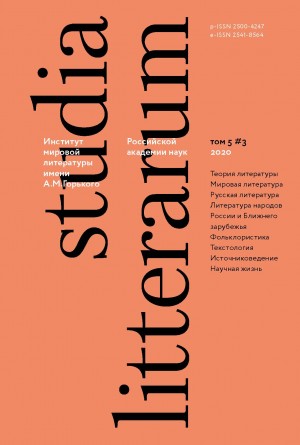PATERNAL CARE: EMPEROR NICOLAS I IN GOGOL’S FATE
Journal title: Studia Litterarum
Authors: Igor’ A. Vinogradov
Subject(s): Literature, Languages and Literature

Journal title: Studia Litterarum
Authors: Igor’ A. Vinogradov
Subject(s): Literature, Languages and Literature
Journal title: Studia Litterarum
Authors: Natalia N. Primochkina
Subject(s): Literature, Languages and Literature
Journal title: Studia Litterarum
Authors: Darya S. Moskovskaya
Subject(s): Literature, Languages and Literature
Journal title: Studia Litterarum
Authors: Kazbek K. Sultanov
Subject(s): Literature, Languages and Literature
Journal title: Studia Litterarum
Authors: Alex L. Nalepin
Subject(s): Literature, Languages and Literature
Journal title: Studia Litterarum
Authors: Tatiana V. Govenko
Subject(s): Literature, Languages and Literature
Journal title: Studia Litterarum
Authors: Olga A. Krasheninnikova
Subject(s): Literature, Languages and Literature
Journal title: Studia Litterarum
Authors: Alessandro Farsetti
Subject(s): Literature, Languages and Literature
Journal title: Studia Litterarum
Authors: Ilya V. Zaytsev
Subject(s): Literature, Languages and Literature
Journal title: Studia Litterarum
Authors: Sergeiy Sandler
Subject(s): Literature, Languages and Literature
Journal title: Studia Litterarum
Authors: Françoise Lavocat
Subject(s): Literature, Languages and Literature
Journal title: Studia Litterarum
Authors: Eugenia V. Ivanova
Subject(s): Literature, Languages and Literature
Journal title: Studia Litterarum
Authors: Yuri N. Girin
Subject(s): Literature, Languages and Literature
Journal title: Studia Litterarum
Authors: Mikhail L. Andreev
Subject(s): Literature, Languages and Literature
Journal title: Studia Litterarum
Authors: Jörg Schulte
Subject(s): Literature, Languages and Literature